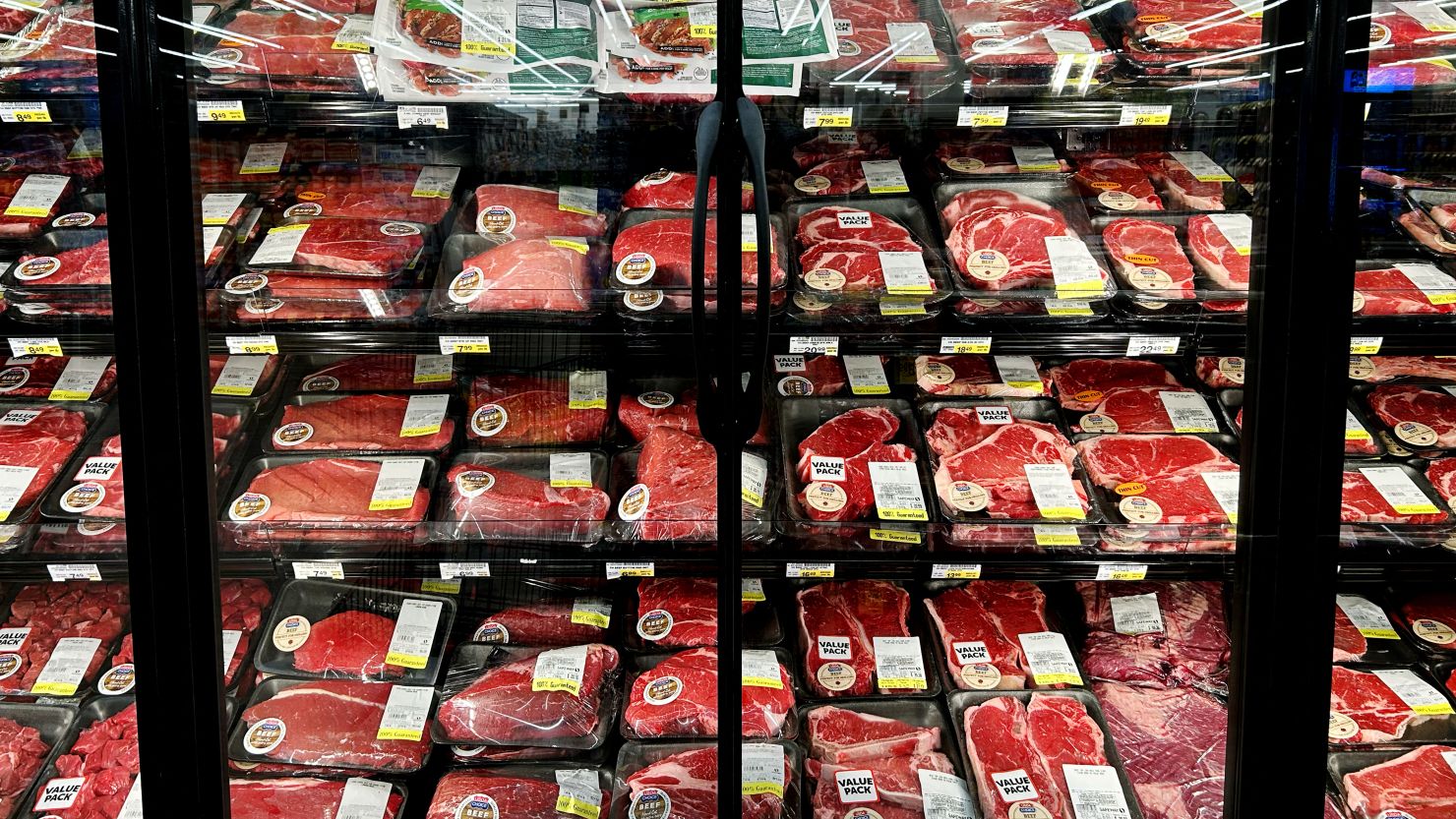Health
Beef Prices Surge Nearly 9% as Supply Challenges Persist

Beef prices in the United States are experiencing a significant surge, rising nearly 9% since January 2023. The latest report from the Department of Agriculture indicates retail beef prices have reached an average of $9.26 per pound. This increase mirrors the earlier spike in egg prices, which drew widespread attention earlier this year.
The latest consumer price index for June shows that prices for steak and ground beef have climbed 12.4% and 10.3%, respectively, over the past year. As consumers grapple with these rising costs, experts highlight that the complexities of the beef market make it challenging to lower prices quickly. According to Michael Swanson, chief agriculture economist at Wells Fargo, the beef industry is significantly more complicated than the egg market. He likens the cattle industry to the “Wild West,” contrasting it with the more structured management seen in egg production.
Factors Behind Rising Beef Prices
The current beef price crisis is rooted in several long-term issues, notably shrinking cattle herds and ongoing drought conditions affecting pastures. The American Farm Bureau Federation (AFBF) reports that cattle herd sizes are at their lowest levels in 74 years. This decline has occurred alongside a consistent demand for beef, which has remained strong despite the rising costs.
During a recent earnings call, Donnie King, CEO of Tyson Foods, noted that the beef market is facing “the most challenging market conditions we’ve ever seen.” As ranchers contend with elevated feed costs due to drought, many have found cattle ranching less profitable, prompting some to exit the industry altogether. AFBF economist Bernt Nelson emphasized that even with record high prices, the profit margins for cattle farmers remain “razor thin” due to sustained supply costs.
In addition to domestic challenges, the beef market is seeing an increase in imported beef. Countries such as Argentina, Australia, and Brazil now account for approximately 8% of U.S. beef consumption. This shift is significant, especially as beef exports from the U.S. have dropped 22% in May 2023 compared to the previous year.
Consumer Demand and Retail Strategies
Despite the soaring prices, U.S. consumer demand for beef remains robust, according to the AFBF. Retailers are exploring innovative strategies to manage costs and maintain customer loyalty. A notable example is Walmart, which recently opened its first owned and operated beef facility in Olathe, Kansas. This facility allows Walmart to work directly with suppliers, thereby eliminating intermediaries and potentially reducing costs for consumers. “This milestone ensures we’re able to bring more consistency, more transparency, and more value to our customers,” said John Laney, executive vice president of food at Walmart.
Looking ahead, the future of beef prices may hinge on consumer behavior. According to Nelson, historical trends show that demand for meat tends to increase with improved household financial situations but can decline during periods of financial uncertainty. “If consumer confidence falls alongside household financial uncertainty, demand for beef could be at risk, especially in the face of record high retail prices,” he stated.
As the market faces these challenges, industry experts like Swanson express concern that producers and ranchers may be caught in a precarious position. “We’re closing in on the peak of this current cycle,” he warned. “Nobody wants to be caught holding the bag with higher-priced cattle when cattle prices start to decline, which they will inevitably.”
The current surge in beef prices reflects deeper systemic issues within the industry, and it remains to be seen how these complexities will unfold in the coming months.
-

 Technology5 months ago
Technology5 months agoDiscover the Top 10 Calorie Counting Apps of 2025
-

 Health2 months ago
Health2 months agoBella Hadid Shares Health Update After Treatment for Lyme Disease
-

 Health3 months ago
Health3 months agoErin Bates Shares Recovery Update Following Sepsis Complications
-

 Technology4 months ago
Technology4 months agoDiscover How to Reverse Image Search Using ChatGPT Effortlessly
-

 Technology1 month ago
Technology1 month agoDiscover 2025’s Top GPUs for Exceptional 4K Gaming Performance
-

 Technology2 months ago
Technology2 months agoElectric Moto Influencer Surronster Arrested in Tijuana
-

 Technology5 months ago
Technology5 months agoMeta Initiates $60B AI Data Center Expansion, Starting in Ohio
-

 Technology5 months ago
Technology5 months agoRecovering a Suspended TikTok Account: A Step-by-Step Guide
-

 Health4 months ago
Health4 months agoTested: Rab Firewall Mountain Jacket Survives Harsh Conditions
-

 Lifestyle5 months ago
Lifestyle5 months agoBelton Family Reunites After Daughter Survives Hill Country Floods
-

 Technology4 months ago
Technology4 months agoHarmonic Launches AI Chatbot App to Transform Mathematical Reasoning
-

 Technology3 months ago
Technology3 months agoUncovering the Top Five Most Challenging Motorcycles to Ride



















